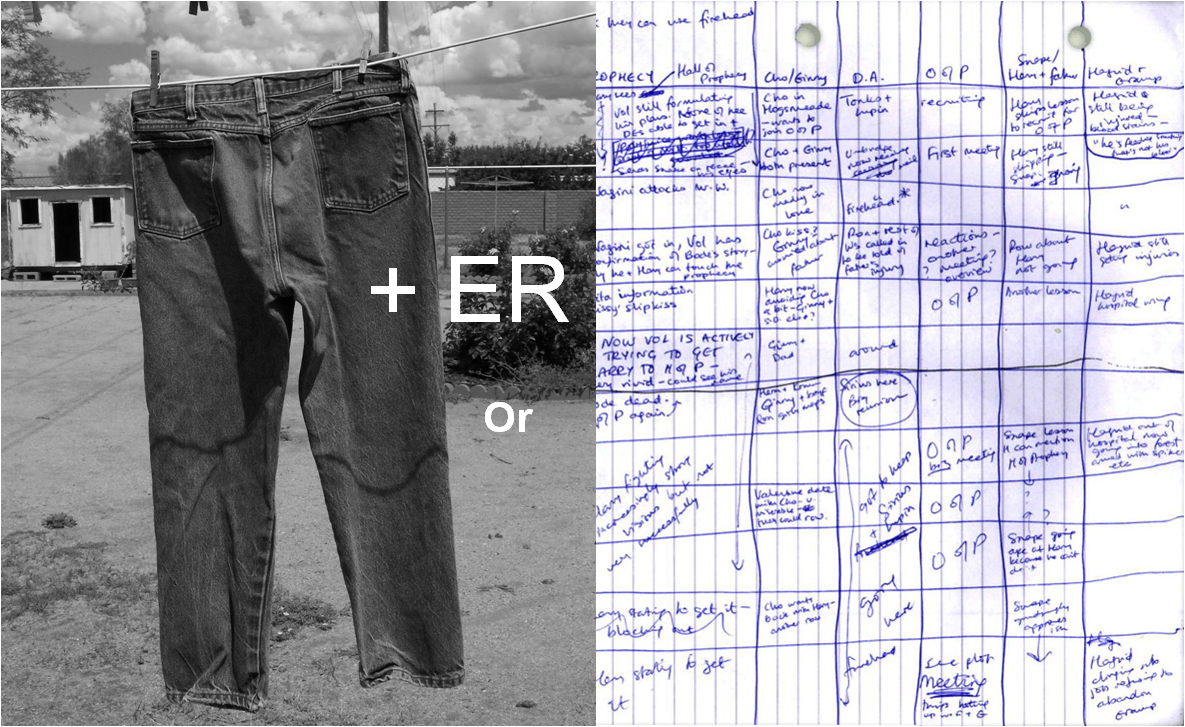There are two kinds of people in the world: Apple vs. Android, Coke vs. Pepsi, and perhaps most importantly for writers, plotters vs. pantsers. It's a rare author who embodies both worlds in her writing, because they're basically the exact opposite approaches for creating a piece of work. There is no right or wrong method to choose; it depends on your personality and writing style, and may even change depending on the particular book you're writing, but each method has definite pros and cons connected to it. In truth, knowing what type "you" are can make you a better writer!

What is a Plotter?
Plotters love an outline. Not just the bare-bones outlining technique you learned in elementary school. That's just the tiniest bare beginning of what some plotters write in order to prepare for their novels. JK Rowling (image next to pants) made an elaborate spreadsheet for every chapter in each of her books, encompassing pages of secrets and interactions. Plotting doesn't have to be this highly detailed, though. Many plotters are happy simply to write down the main points of each story arc, indicate plot changes and main character introductions, and give the direction in which the story will go. Plotters definitely know how their story will end.
What About Pantsers?
Pantsers are the free spirits of the writing world, the grasshoppers to the plotting ants. Pantsers may or may not know where they're going or even what's going to happen along the journey. They simply have a concept, a question, or a couple of characters, and they play with them to see what happens. NYTimes bestselling author Jana DeLeon is an unapologetic pantser, often claiming that she's gotten 80 percent of the way through writing some mysteries before she's discovered who dunnit. Pantsers may have a general direction in which to go, but usually can just sit down to write without a plan or direction.
Pros & Cons
Both methods have their good and bad points. The technique you use to write your book depends on your personality, your writing style, and even the novel you want to create. Simple stories are much easier to pants than elaborate, complicated plots. For example:
Plotters
-
Know where the story will end, so there's little chance of losing the thread of storyline
-
Have less of a chance of wandering off in a totally different direction
-
Are stuck with the story line as written, even if a new twist comes up, unless they redo their entire outline
-
Can limit their creativity
Pantsers
-
Are free to move their story in any direction they choose, as whims arise
-
Can add plot twists on the fly and introduce new characters and directions late in the game
-
Can wander off track and lose the thread of the story, losing track of characters and earlier plot twists
-
Often don't know how the story ends, where the story is going, or how to get there.
The better you understand who you are as a writer the more creative and more productive you can be....makes sense right?




